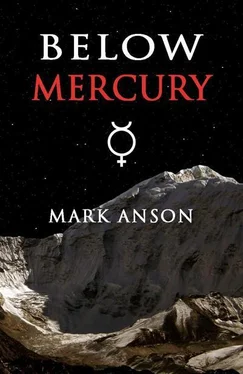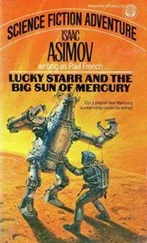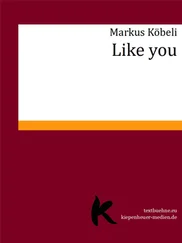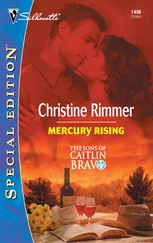Messenger has already returned a wealth of scientific information from its three Mercury flybys, but now that it is in orbit the amount of data gathered will increase enormously. The high-inclination orbit will allow detailed examination of the cold polar craters, and the tantalising possibility of finding ice in the deep crater floors.
Mercury’s density, as deduced from its orbital motion, is extremely high. If it were not for the Earth’s density being higher due to compression effects, Mercury would be the densest planet in the Solar System. Mercury is made almost entirely of iron; it has a huge iron core that takes up most of the planet, with a relatively thin silicate mantle and crust. Because of this, even though Mercury is just one-eighteenth of the Earth’s volume, its surface gravity is over a third that on Earth, and is equal to that of Mars, a much larger planet.
In a strange parallel to the early history of the Earth, Mercury was once much larger. Long ago when the Solar System first formed, more planets turned round the young Sun than do so today. It is thought that, in a catastrophic impact with another early planet, Mercury’s outer layers were blown off into space. In the molten ruin of the planet, most of the liquid iron sank into the giant core, leaving the silicate minerals behind to form the mantle and crust. The primordial surface of Mercury was further altered by eruptions of basaltic rock from deep below the surface, and during subsequent crater-forming epochs.
Chao Meng-fu crater
The craters of Mercury are named after famous artists, painters, authors, and musicians. Chao Meng-fu crater is a very large crater, lying almost exactly on the South Pole of Mercury, and is named after Chao Meng-fu (1254–1322), a Chinese scholar, painter and calligrapher who lived during the Yüan Dynasty. His most famous work of art is Autumn Colours on the Ch’iao and Hua Mountains. On the handscroll of the painting, now preserved in the National Palace Museum in Taipei, he wrote:
‘The venerable Kung-chin is a man of Ch’i [Shantung]. After I had completed my service as T’ung-shou [lieutenant governor] of Ch’i-chou and returned home, I told him about the mountains and rivers of Ch’i. Among them Mount Hua-fu-chu is the most famous, having been mentioned in the Tso [a book by Tso Ch’iu-ming]. Its shape is lofty and precipitous, rising isolated in a most unusual way. So I painted this picture for him, setting Mount Ch’iao on the east; which is why I call it Autumn Colours on the Ch’iao and Hua Mountains. In the twelfth month of the first year of the Yüan-cheng era [1295]. Done by Chao Meng-fu of Wu-hsing.’
Chao Meng-fu would have been surprised indeed to learn that, after his death, his name would live on to grace the lofty and precipitous mountains of another world.
On the map of the crater, the position of the crater relative to the geographic South Pole is shown as suggested in J.K. Harmon’s 1994 paper Radar mapping of Mercury’s polar anomalies (for this and other references, see Bibliography), so that the crater rim lies on the South Pole, and not in the position shown in NASA’s 1978 Atlas of Mercury . The latitude and longitude of the crater quoted in the story reflect this as well. It will be interesting to see if this is borne out by the Messenger science results.
The names of the central peaks in the crater are fictitious, and are taken from Chao Meng-fu’s inscription on his famous painting. Chu-Tsing Li’s book The Autumn Colours was invaluable in appreciating the work of this extraordinary and gifted artist.
The map of the crater shows longitudes increasing to the west, in accordance with the original NASA maps, and International Astronomical Union conventions for planetary rotation. For navigation at the South Pole, however, where every direction is ‘north’, a grid north system is used, where north is aligned with the direction of 0° longitude, and east is 90° clockwise from this. This results in grid heading 90° lying on the 270° line of longitude, and vice-versa. This is intentional, and correct for this system of polar navigation.
The detail of the floor of Chao Meng-fu crater is fictional, as this area is in permanent darkness and has not yet been mapped. The map is based loosely on the Mariner 10 airbrush maps as published in NASA’s Atlas of Mercury , with considerable license taken over the structure and position of the central peaks.
If Mercury’s primordial surface solidified from a magma ocean, as seems possible, then it may be composed of anorthosite, like the Moon, with a subsequent covering of low-iron flood basalts. The impact event that formed Chao Meng-fu crater will have punched deep into this surface structure, and the described geology of the crater follows this supposition, with deposits of metals and ores concentrated around the rim of the impact melt, similar to the Sudbury Basin on Earth.
The mine
If there were indeed ice on Mercury, it would be a tantalising prospect to mine it and use Mercury as a refuelling base. Ice on its own, however, would not be enough to drive the commercial development of such an inhospitable world – only some scarce and incredibly valuable commodity could do this, and helium-3 fills this role in the story.
Due to the likely large size and complexity of practical fusion reactors, small reactors would still need to utilise fission fuels, and this is reflected in the description of the mine’s main power source.
Erebus Mine is intended to reflect a working mine, based on principles of terrestrial mining engineering and practice, extrapolated to a planetary mine in a hostile environment. Although much of the ice mining can take place using open-pit mining techniques, the high radiation levels on Mercury’s surface would require all the living accommodation and critical equipment to be located underground.
While an open-pit mine would appear to be the simplest option for extraction of the surface ice deposits, there would be practical advantages in mining the ice underground using room-and-pillar workings, notably not having to work in the hostile environment of the crater floor. The design of the mine in the story is a compromise; the surface layers are mined using an open-pit operation, while underground room-and-pillar workings are used for the deeper deposits.
The spaceplane
The Olympus 240 spaceplane in the story is an example of a reusable, single-stage-to-orbit (SSTO) launch vehicle. To date, such a vehicle has never been realised due to the difficulties in meeting the two requirements in one vehicle. The Space Shuttle was a reusable launch vehicle, but was not single stage.
The spaceplane in the story begins its orbital ascent from a fully loaded state, flying high in the atmosphere, so that it does not have to move its entire loaded mass from a standing start from a runway or launch pad. This saves a considerable amount of propellant, but the biggest savings (compared to a pure rocket) come from accelerating the vehicle to hypersonic speeds while still in the atmosphere, using air-breathing engines.
This portion of the orbital ascent presents extraordinary engineering challenges. Considerable advances in materials science and propulsion technology would be required before a vehicle such as this would be practicable. The nose, leading edges and other surfaces of the spaceplane that are exposed to the highest temperatures would all require active cooling in order to survive the heat generated by atmospheric friction. The air entering the engines would also need cooling, as it would be red-hot from the compression caused by slowing it down to subsonic speeds.
Читать дальше











